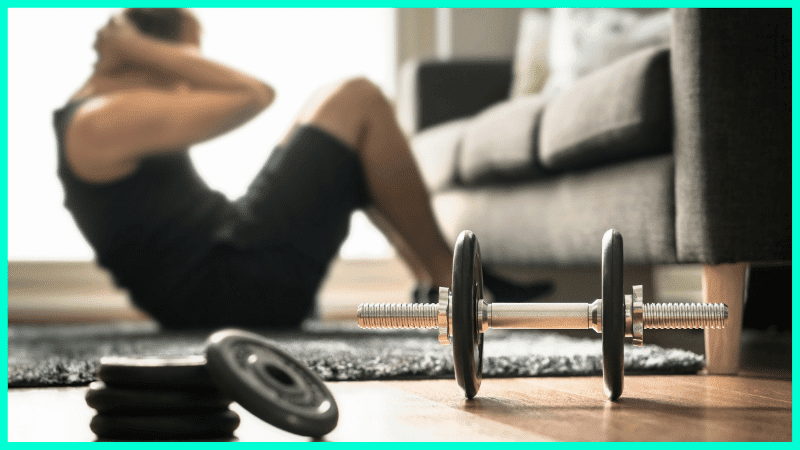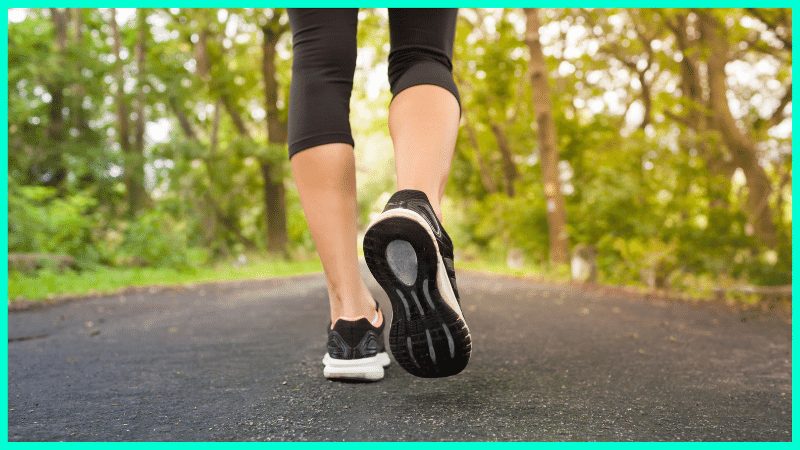Table of Contents
Have Good Gym Etiquette
In general, our approach towards sickness has always been simple: if going to the gym can get others sick, then stay away. That counts for coughs, sniffles, sore throats, fevers, and anything that isn’t general fatigue. Remember, one day is just one day.
That doesn’t mean you can’t workout at home when you’re sick (more on that below), but try to think of others when you’ve got symptoms.
What About Home Workouts?
Thanks to COVID, most of us have had to train at home at some point in the last few years. The risk of infecting others is low (unlike your toddler’s daycare) and that means the temptation to workout when you’re sick is higher.
Here’s the problem: Your normal workout routine – the one where you’re breathing hard and pushing your body – triggers a stress response in the body. When you’re healthy, your body responds and adapts to this stress to get stronger.
But when you’re sick, your immune system is already stressed. Adding more stress with a hard workout (or long, challenging run) might overload the system. That means you could get sicker.
My rule of thumb? If you feel that your sickness will lead to a less intense workout, then avoid your normal workout routine. At Born Fitness, our training philosophy emphasizes intensity. I’d rather have you be healthy and push the limits during a short period of time, than feel like shit your entire workout.
This doesn’t mean you have to become one with the couch when you’re sick. As long as you’re doing the right type of movement you can continue regular exercise while recovering.
How To Workout When You’re Sick
First off, be sure to listen to your doctor’s advice when you’re sick. If they recommend avoiding any exercise, they’re likely doing that for a reason. However, if you’re cleared for exercise, low-intensity movement can help you feel better faster and recover sooner.
What counts as low-intensity exercise? Think of things like walking or an easy pace on your favorite cardio machine if you have one at home. Or, you might do a mobility circuit. My go-to is long walks outside.
The key is to keep your heart rate lower during the session. You shouldn’t be gasping for breath at any point or even struggling. And remember, low-intensity can look different for each person. Listen to your body and choose an exercise that you can keep an easy pace with.
Think of these workouts like a day at the spa. You should leave feeling restored and energized, not beat down.
The Bottom Line
We believe in training with intensity when you workout, but that doesn’t mean you need to PR every workout when you’re healthy. Many of your workouts are going to be “hard hat” days. You just put on your hard hat, even if you’re sore, tired, or not in the mood, and you make it happen. Those days are victories.
On the other hand, days when you force yourself to train when you’re sick because of an irrational fear of needing to train, are a loss. Learn to pick and choose your battles and hold yourself to a high standard. And, more often than not, it’ll lead to good health.

B.J. holds a B.S. in Health and Human Performance and multiple certifications, including Precision Nutrition Level 1 and BioForce Certified Conditioning Coach. Over his 14-year coaching career, he’s been fortunate enough to coach a wide range of clients. From online clients looking to get in great shape to CEO Nate Checketts (Rhone) and CEO Marcelo Claure (Softbank), and professional skateboarder Sean Malto. Before beginning his training career, he was a sports science lab research assistant.


I believe it really depends on you if you can work out even if you are sick. Working out from home was best, but you really need to find time and dedication for it.
Thanks, B.J for your insights. Whenever I for a gym with a cold, got low energy levels. I will keep your tips into my mind.